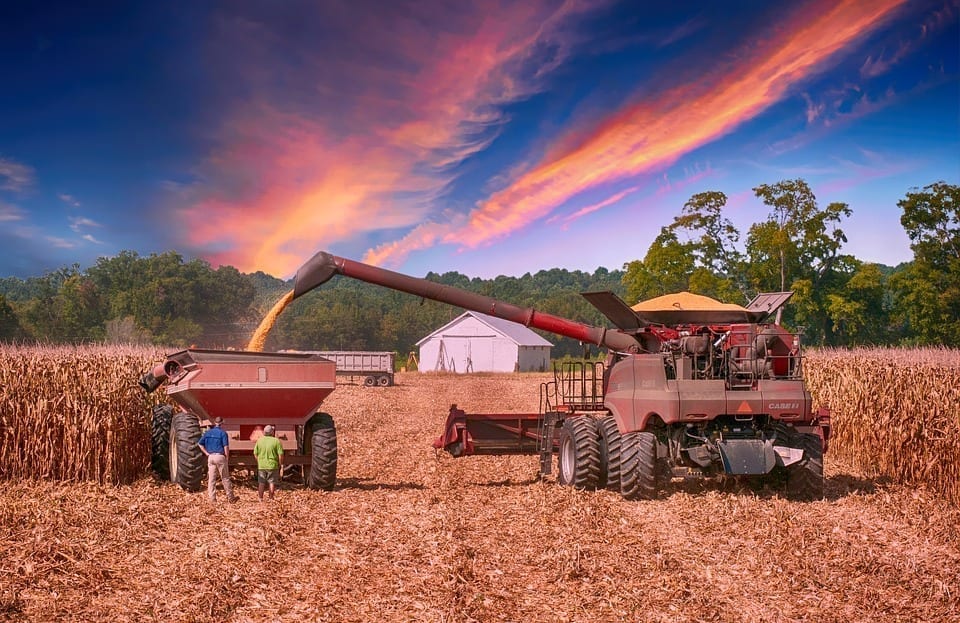To many, the future of agriculture means robot tractors and vertical farming, but coming challenges and resource scarcity mean we need less tech, not more.
Ask a lot of people how they imagine the future of agriculture will unfold, and you will get multiple answers with a techo-utopian theme. From robotic tractors to computer-controlled hydroponics, our ideas about how our grandchildren will farm look like something out of the Jetsons. But is this vision warranted, based on several current trends that most folks would rather ignore? Let’s take a look.
Previous technological answers to real-world farming problems have led to even more problems. Despite early successes, chemical pesticides went on to stimulate the evolution of resistant pests, forcing farmers and chemists into an arms race against nature (and each other). Herbicide resistant weeds like Palmer’s amaranth and bugs unbothered by insecticides continue to displace and feast upon crops despite millions of dollars spent on R&D and field application. Much like antibiotic resistance, we’re eventually going to run out of viable options, leaving us with tougher pests than we had before we started. Clearly, the future of agriculture relies on defeating farm pests some other way, yet remarkably few farmers have questioned the necessity of monocultures. Planting vast fields with one species of crop provides conditions well-suited to widespread pest problems, but selling farmers chemical solutions is more lucrative than encouraging farming methods more aligned with nature.
There are bigger problems coming, though. For one, we’re facing a global shortage of fresh water. In the United States, farming families who tapped into the Ogallala aquifer back in the mid-20th century are beginning to come up short. The Ogallala, which took thousands of years to fill with rain filtering through the Great Plains, has been nearly depleted from less than a century of irrigation. Once irrigation becomes practically impossible in the Plains, the American breadbasket will shrivel up. Unless we make drastic changes in water use, more than we already have, the heartland will have no role in the future of agriculture.

Soil is another looming problem. Even as we add population, we keep losing arable land. Plowing, leaving soil bare between row crops and in the winter, and catastrophes such as floods, all cause soil erosion. One estimate, from the Food and Agriculture Organization, claims that at the current rate of depletion, we have only 60 more harvests worth of topsoil left. The future of agriculture depends on our ability to produce food without destroying our remaining soil, which we may already be doing faster than we think. There are solutions, though. One answer is to replace annual row crops like corn and soy, which are often fed to livestock, with pasture. Using the natural movement and behavior of grazing livestock could restore and build soil while sequestering carbon, but then we wouldn’t have a lot of the current industries that rely on cheap inputs of commodity crops. One must have a sense of priorities.
Perhaps the biggest challenge to the future of agriculture is one we created ourselves. Climate change is expected to drive desertification of the American west and greater weather extremes in the Great Plains. Agriculture as we know it today developed during a long period of relative stability. When we lose that stability, today’s massive agricultural system will become far less reliable.
Agriculture, at least as we currently practice it, blows through resources that are becoming ever more scarce. Technological solutions, like shipping containers full of hydroponic growing systems, may be excellent at providing wealthy urban people with fancy lettuce and cilantro, they don’t seem to be producing the kind of high-calorie staple foods that humans need to survive.
There’s also questionable utility to pouring a concrete slab on which to drop a dark metal box in which to grow food with electricity substituting for the sun, or building autonomous tractors to work vast acreage when farming is more efficiently accomplished on smallholdings. In order to feed the world (or what remains of it, eventually), we need low-tech solutions that even the impoverished can use to feed themselves and their communities. Greater dependence on resources, such as chemical inputs, electricity, groundwater, fossil fuels, and tillage practices that destroy soil are non-starters in a world that needs to power down. The future of agriculture, if it doesn’t adapt, may be no future at all.
Related: John Deere Tractors, Farmers, and Soil


Join the conversation!